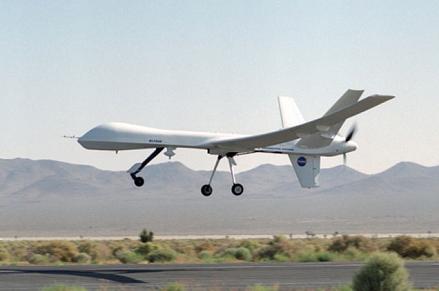The US FAA plans to release a draft roadmap in April detailing its proposed approach to the integration of UAVs into the US national airspace over a five year period.
In parallel the agency is forecasting a 400% growth in applications for certificates of authorisation (COA) for UAV operations in US airspace over the next four years.
The US national regulator says it expects 135 applications this year - up from just over 100 last year and 54 in 2005.

The draft roadmap was briefed internally to senior FAA officials in December with the public version to be finalised by late March ahead of the April release says Doug Davis, manager of the FAA unmanned aircraft programme office.
Speaking at the Association for Unmanned Vehicle Systems International’s annual US government programmes update conference in Washington 9 February, Davis said “We will have the roadmap complete by the end of next month and then it will be available for comment from the public in April. Then we will probably go final with it in September.”
The roadmap will detail a five year approach for a coordinated US government and industry effort, “laying out the activities that have to happen to operationally integrate unmanned aircraft into the national airspace”.
Davis told the conference that the need for co-operative approaches linking all levels of government and industry in the US was driven by the sheer breadth of UAV related activities taking place at both a domestic and international level.
“We know that there are a lot of activities going on. We have seen it even to date, but the activities are increasing at a very steep rate. Because of that we are trying to stay on top of it, stay ahead of it. It is very difficult to do and we are not going to do it directly and we are not going to do it in a timely fashion but we are going to do it,” he says.
The roadmap projects continued use of COA and individual aircraft experimental certification arrangements pending the development of effective standards upon which the mature policy can be based.
Davis said that the FAA anticipates receiving 190 COA applications in 2008, rising to 285 in 2009 and 428 in 2010.
While nine experimental certificates are anticipated to be requested this year, this is forecast to rise to 11 in 2008, 25 in 2009, 42 in 2010 and 59 in 2011.
A total of five experimental certificates have been issued to date, and three are current: General Atomics Aeronautical Systems for its Altair aircraft; Raytheon Systems for its Cobra tactical system; and Bell Helicopter for its Eagle Eye vertical take off and landing system.
Each certificate covers one aircraft for a one year period with Altair the only aircraft thus far to secure a second. Raytheon holds two certificates covering two Cobra UAVs, while Bell has been required to surrender its certificate after its Eagle Eye production prototype suffered major damage in a hard landing.
Davis says that “we can project a significant ramp-up in the applications for COA and the applications for experimental - and so tangentialy that brings us to a resource question pretty fast”.
However, he also says that ongoing research being conducted by the FAA as part of its consultation process with US industry and current and potential US government user agencies is pointing to a marketplace considerably lower than that being suggested by the commercial market forecasting sector. “Our interview-based projections so far are quite substantially lower,” he notes.
Full maturation of all requisite standards for safe UAV operation in US airspace is expected to take until 2011 Davis told the conference. However that could be accelerated by increased US Defence and industrial organisation participation in the standards-definition process as well as by the commitment of additional resources. “This is not an insignificant effort; it is going to take a lot of effort and a good deal of time,” says Davis.
The FAA is internationalising its integration effort through ongoing contact with Eurocontrol, EUROCAE and in more recent times ICAO. Davis says the regulator remains committed to “developing and harmonising the global approach” and is actively supporting co-operative development of standards.
He says: “This is an important effort that the Europeans want to be lockstep with the Americans on. It is a good thing for us to have that partnership and relationship building as we move forward. We don’t want to have different standards being built in different parts of the globe - it doesn’t serve our manufacturers any goodness whatsoever.”
The update on FAA plans comes as the US industry-based Unmanned Aircraft Systems National Industry Team (UNITE), formed to drive UAV integration into US airspace to open up the civilian market, has announced its official disbanding.
In a statement released 7 February the organisation said that it will “disband later this year after successfully raising its concern to a national level”.
UNITE was formed in 2002 with a membership comprising of AeroVironment, Aurora Flight Sciences, Boeing, General Atomics Aeronautical Systems, Lockheed Martin, and Northrop Grumman.
Mike Heinz, UNITE executive director said: “The single objective of UNITE has been to integrate unmanned air system safely and routinely into the NAS. This objective remains critically important to all of the UNITE member companies and to U.S. aviation leadership. Much work still needs to be accomplished, but momentum is growing.”
Heinz points to the formation of the FAA unmanned systems office, plus establishment of airspace co-ordination teams within the US Department of Defense and ongoing work on standards development by professional and trade associations, and says: “UNITE is well satisfied that the mechanisms are now in place to continue the momentum toward the objective. The member companies agree that it is now appropriate to focus their resources on the activities sponsored by these organizations.”
Source: FlightGlobal.com























